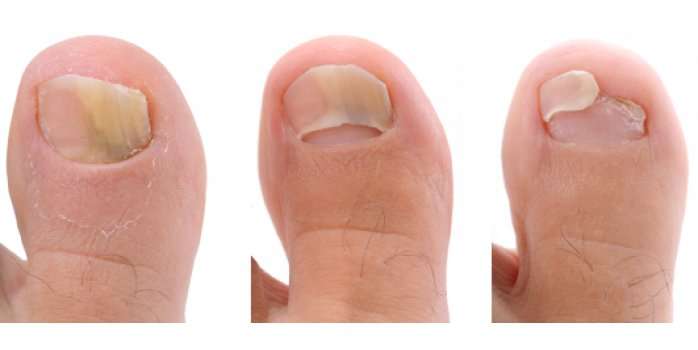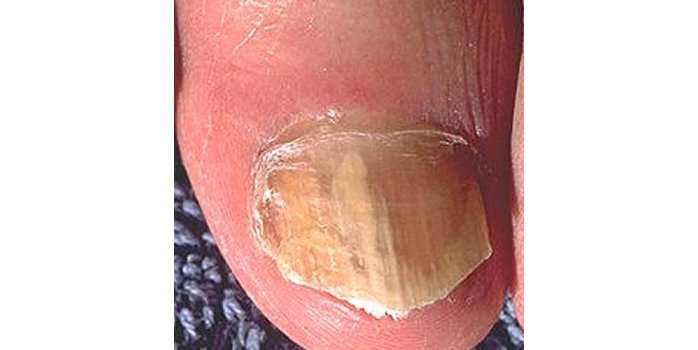Definition
Toenail fungus, known medically as Onychomycosis, is a very common condition and affects around half of the population by the age of 70. It is relatively rare in children, but the incidence increases with age. Fungal infections occur when microscopic fungi gain entry through a small trauma in the nail, then grow and spread in the warm, moist environment inside the patient’s socks and shoes. Symptoms of toenail fungus, which can be caused by several types of fungi, include swelling, yellowing, thickening or crumbling of the nail, streaks or spots down the side of the nail, and even complete loss of the nail. Toenail colour can vary from brown or yellow to white with this condition. Fungal infections can affect the fingernails as well as the toenails, but toenail fungus is more difficult to treat because toenails grow more slowly. It occurs most often on the big or small toe, but might occur on any toe.
Cause
Toenail fungus can be picked up in damp areas such as public gyms and showers or swimming pools, and can be passed among family members. Athletes and people who wear tight-fitting shoes or tight hosiery that cause trauma to the toes or keep the feet from drying out are at higher risk. The condition can also spread from one toe to another, or to other parts of the body. Other risk factors include abnormal PH level of the skin, not drying off the feet thoroughly after bathing or exercise, and a compromised immune system in someone who has been exposed to a fungus. Diabetics have an increased risk of contracting a toenail fungus because their immune system is compromised.
Treatment and Prevention
Because it is difficult to treat or eradicate toenail fungus, it is a good idea to try to prevent it. It helps to wear protective shoes or sandals in public showers, pool areas and gyms, and to avoid borrowing someone else’s shoes or sharing socks or towels with someone who has toenail fungus. Wash your feet regularly, and dry them thoroughly when they get wet. Wearing nail polish on the toes is not advised because it can seal in fungus and allow it to grow. Keep toenails trimmed, and be sure to disinfect any pedicure tools before using them.
If you do develop toenail fungus or suspect it, see a Podiatrist. The Podiatrist might remove as much of the nail as possible by trimming, reducing or dissolving it. Medicated nail polish might be prescribed for a localized infection, but a serious infection will likely be treated with a prescription oral antifungal medication. These medications can have side effects, so be sure to work closely with your podiatrist on your treatment plan. Only in severe cases will surgical removal of the nail be recommended.




